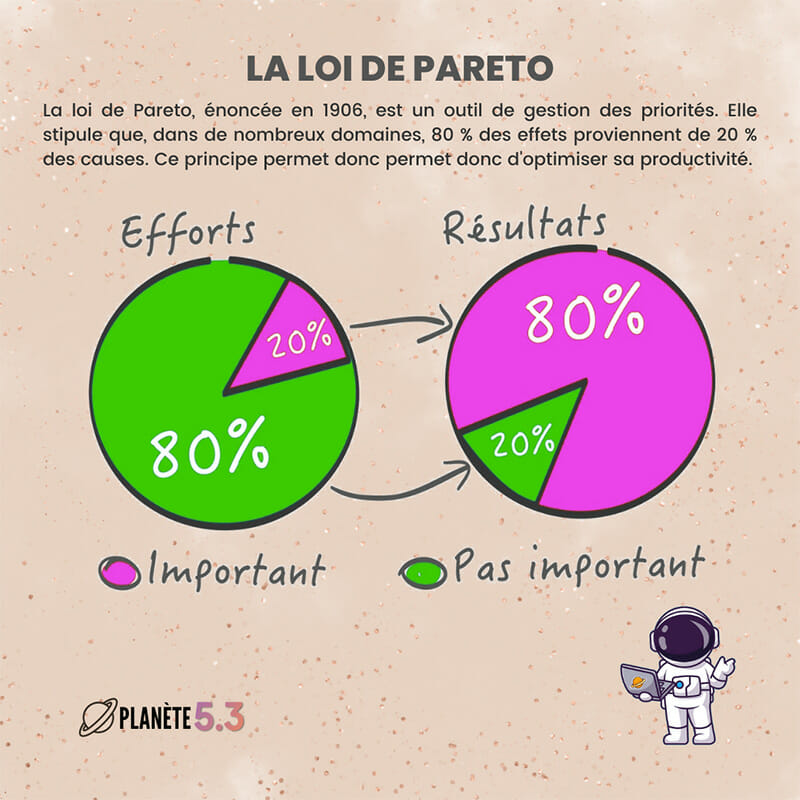Pareto’s law is a priority management tool. It states that, in many areas, 80% of the effects come from 20% of the causes. Concretely, this means that most of the results we obtain are the result of a small number of causes or elements. This principle therefore makes it possible to optimize its productivity or the effectiveness of a system by targeting its efforts on key elements.
Where does Pareto’s Law come from?
This law was stated by the economist Vilfredo Pareto in 1906 when he observed that in Italy, 20% of the population owned 80% of the wealth. Since then, Pareto’s law has been applied to many areas, including business, time management and productivity.
For example, Pareto’s law can be used to identify the 20% of customers who bring in 80% of the profits or to find the 20% of tasks that take the most time and which could be automated or delegated. By using this law for time managementit is possible to target efforts on the elements that have the greatest impact and maximize results.
This law is not an absolute rule, you must remain flexible and adapt it to the circumstances and your objectives. You should definitely not use it exclusively when making a decision. But, in many cases, you will see that it is a good indicator for checking trends or validating models.

On a personal level or in your professional projects, you can use it as a management tool to identify your priorities and allocate them the corresponding resources.
5 steps to use Pareto’s law
Here is a 5-point method for applying Pareto’s law to a project:
- Determines the main project objectives and associated tasks. This will allow you to determine what you should target by carrying out your Pareto analysis.
- Collection of data on tasks accomplished and results produced. This includes the time spent on each task, the number of tasks completed or the difficulty level of each of them.
- Analyze the data to determine the 20% of tasks that you believe bring 80% of the results. It is best to use a column chart to visualize the data.
- Seek solutions and implement measures to improve the efficiency of the 20% of tasks that bring the most results. This may involve automating, delegating or simplifying certain tasks.
- Monitor the impact of these measures on the project daily, weekly or monthly (it depends on the project!). success of the project and adjust them accordingly.
The limits of the Pareto principle
Pareto’s law does not apply strictly to all areas, far from it! In some cases the distribution of results may be different, for example 60/40. It can thus lead to an overestimation of the importance of certain tasks and the neglect of certain key elements.
It does not take into account either the complexity or the importance of the different activities. For example, certain actions may be sterile in terms of results, but nevertheless be essential for the smooth running of the project as a whole.
Do you want an example? Project management which aims to plan, coordinate and monitor the progress of a project does not produce tangible results, but remains crucial to ensure that the project is successful.

















